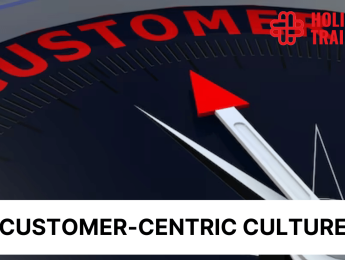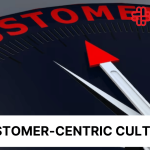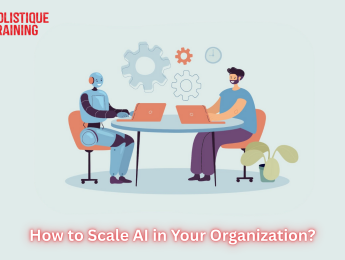- Table of Contents
- Introduction
- What Is Customer Centricity?
- Why Is Customer Centricity Important?
- Enhanced Customer Loyalty
- Increased Customer Lifetime Value (CLV)
- Competitive Advantage
- Improved Brand Reputation
- Innovation Catalyst
- Agility and Adaptability
- Customer Advocacy and Community Building
- Risk Mitigation
- Employee Satisfaction and Retention
- Best Practices for Becoming a Customer-Centric Company
- 1- Cultivate Customer-Centric Leadership
- 2- Empower and Train Employees
- 3- Listen to Customer Feedback
- 4- Adopt Customer Journey Mapping
- 5- Embrace Technology for Customer Engagement
- 6- Recognise and Reward Customer Loyalty
- The Downside of Customer-Centricity on Employees
- Employee Burnout
- Lack of Autonomy
- Conflicting Priorities
- Employee Disengagement
- Short-Term Thinking
- Mitigating the Negative Impact
- Empower Employees
- Provide Resources and Support
- Recognise and Reward Employees
- Balance Metrics and Objectives
- Foster a Learning Culture
- Conclusion
Introduction
Customer-centricity, the art of putting customers at the heart of everything an organisation does, has become the hallmark of successful businesses. Beyond simply offering a product or service, it involves deeply understanding customer needs and desires to deliver a seamless and personalised experience. In this blog post, we will explore the essence and significance of a customer-centric culture and delve into best practices that can help transform your organisation into a customer-focused powerhouse. By embracing these principles, you can cultivate loyalty, drive growth, and gain a competitive edge in the ever-evolving business landscape.
What Is Customer Centricity?
At its core, being customer-centric implies that an organisation's entire focus is centred on the customer. This mindset requires understanding customer needs, desires, and pain points to tailor products, services, and experiences accordingly. A customer-centric company puts the customer first in every decision, from product development and marketing to sales and customer support.
In a customer-centric culture, employees at all levels are encouraged to empathise with the customers and view their roles through the lens of customer satisfaction. This means going beyond merely meeting customer expectations and striving to exceed them in every interaction.
Why Is Customer Centricity Important?
Now that we have explored the essence of a customer-centric culture, let us delve into why adopting this approach is of utmost significance for any organisation:
Enhanced Customer Loyalty
At the heart of customer-centricity lies the key to unlocking unparalleled customer loyalty. By prioritising customer satisfaction, organisations build a foundation of trust and reliability. Satisfied customers are not just one-time buyers; they transform into repeat customers and, more importantly, vocal advocates for the brand. Their positive experiences lead to organic word-of-mouth marketing, influencing others to choose the same brand. This organic promotion is a potent force in today's interconnected world, where customer recommendations and reviews carry significant weight..
Increased Customer Lifetime Value (CLV)
A customer-centric approach ensures customers feel valued and appreciated, leading to higherCLV. Happy customers tend to stay loyal to a brand for the long term, resulting in increased revenue and profitability. In fact, findings from Deloitte and Touche's research reveal that businesses with a customer-centric approach enjoy a remarkable 60% increase in profitability compared to their product-focused counterparts. By prioritising the customer at the heart of their organisation, these companies experience enhanced customer lifetime value and a significant reduction in customer churn rates.
Competitive Advantage
In today's saturated markets, where products and services often appear homogeneous, businesses need to find unique ways to stand out. A customer-centric culture provides a powerful differentiator. By creating memorable and positive experiences, organisations ensure that they are not just competing on products or services but on the overall journey they offer to their customers. This distinctiveness becomes a competitive advantage, as customers are more likely to choose a brand that goes the extra mile to understand and fulfil their needs.
Improved Brand Reputation
A positive brand reputation is an invaluable asset in today's interconnected world. Organisations that prioritise their customers' needs and consistently deliver exceptional experiences tend to enjoy a favourable reputation. This positive perception attracts new customers and enhances the organisation's credibility. Word-of-mouth recommendations, positive online reviews, and social media endorsements contribute to a virtuous cycle where a good reputation begets more customers, and more customers contribute to an even better reputation.
Innovation Catalyst
A customer-centric culture catalyses innovation. Organisations gain invaluable insights that fuel innovation by deeply understanding customer needs and pain points. Customer feedback becomes a wellspring of ideas, driving product and service improvements. This iterative process of innovation keeps the organisation ahead in the market and positions it as an industry leader, attracting customers who seek cutting-edge solutions. In this way, customer-centricity becomes a driving force for continuous improvement and staying at the forefront of industry trends.
Agility and Adaptability
The business landscape is dynamic, with rapid changes in consumer preferences and market trends. Customer-centric organisations inherently develop a high degree of agility and adaptability. They are quick to respond to shifting customer expectations and market demands. This agility is a strategic advantage, allowing organisations to pivot their strategies, adjust offerings, and stay ahead of competitors. By being attuned to customer feedback and market dynamics, customer-centric companies can easily navigate uncertainties, ensuring sustained relevance and resilience in a volatile business environment.
Customer Advocacy and Community Building
A customer-centric approach goes beyond mere transactions; it fosters a sense of community. Satisfied customers become loyal patrons and enthusiastic advocates for the brand. This advocacy extends to online and offline spaces, with customers willingly sharing positive experiences with their networks. Organisations can build a community around their brand by leveraging this organic word-of-mouth marketing. Such communities contribute to customer retention and act as a powerful marketing force, attracting new customers through the authenticity of peer recommendations.
Risk Mitigation
Understanding and prioritising customer needs can act as a risk mitigation strategy. Organisations can identify potential issues or concerns early in the product or service lifecycle by actively listening to customer feedback. This proactive approach allows for timely interventions and course corrections, preventing potential reputational damage or costly product recalls. Additionally, a strong customer-centric culture establishes a foundation of trust with customers. In times of crisis or challenges, this trust can be instrumental in maintaining customer loyalty and weathering storms that might otherwise erode a less customer-focused organisation.
Employee Satisfaction and Retention
While customer-centricity focuses on external stakeholders, its positive effects extend internally as well. Employees in organisations that prioritise customer satisfaction often find greater meaning and purpose in their work. Knowing that their efforts contribute to creating positive customer experiences can boost employee morale. Moreover, organisations that value their employees as much as their customers create a workplace culture that fosters loyalty and reduces turnover. This, in turn, contributes to organisational stability and the retention of institutional knowledge, further benefiting the customer experience.
In essence, customer-centricity is not just a buzzword—it's a strategic imperative that directly impacts an organisation's bottom line and market positioning. It's a commitment to building lasting relationships, understanding that satisfied customers are not just transactions but the lifeblood of sustained success. By making customer satisfaction a guiding principle, organisations can unlock the full potential of enhanced loyalty, increased CLV, a formidable competitive advantage, and an unwaveringly positivebrand reputation.
Best Practices for Becoming a Customer-Centric Company
Certain best practices must be embraced to create a customer-centric culture that resonates with your customers and drives business growth. In this section, we will outline essential strategies that will guide your organisation in becoming truly customer-centric. These practices will lay the foundation for a successful customer-centric transformation from empowering your employees to leveraging technology for enhanced engagement. Let's explore these best practices in detail:
1- Cultivate Customer-Centric Leadership
Creating a customer-centric culture starts at the top. Leaders must embody customer-centric values and demonstrate them in their decision-making processes. Leaders set an example for the entire organisation to follow by prioritising customer needs and consistently emphasising their importance.
Leaders can also promote transparency by involving customers in strategic discussions, seeking their feedback, and incorporating it into the decision-making process. This collaborative approach ensures the organisation remains in touch with its customers' ever-evolving preferences and expectations.
Leadership Practice | Description | Example |
Lead by Example | Demonstrate customer-centric values | CEO actively seeks and acts on customer input |
Transparent Decision-Making | Involve customers in strategic discussions | Customers participate in key decision-making |
Promote Collaborative Approach | Encourage teamwork and customer focus | Cross-functional teams work on customer projects |
Table 1: Leadership practices that help foster a customer-centric culture
2- Empower and Train Employees
Employees are the backbone of any organisation, and they play a crucial role in shaping a customer-centric culture. Organisations should invest in comprehensivetraining programs that empower employees with the skills and knowledge needed to understand and cater to customer needs effectively.
Empowerment goes hand in hand with training, allowing employees to make decisions that prioritise customer satisfaction without excessive bureaucracy. This can involve granting employees the authority to resolve customer issues quickly or offering personalised solutions to enhance the customer experience.
3- Listen to Customer Feedback
Customer feedback is a goldmine of insights that can drive organisational improvements. Implementing various feedback channels, such as surveys, social media monitoring, and customer service touchpoints, enables businesses to capture valuable feedback and understand what their customers truly want.
However, listening to feedback alone is not enough. Organisations must act on this feedback promptly and transparently. Demonstrating that customer input is valued and acted upon fosters trust and confidence among customers, strengthening their loyalty to the brand.
4- Adopt Customer Journey Mapping
Understanding the customer journey is vital for creating a seamless and satisfactory experience. Customer journey mapping involves identifying and analysing each customer touchpoint with the organisation, from initial awareness to post-purchase support.
By analysing these touchpoints, organisations can identify pain points, areas for improvement, and opportunities to deliver delightful experiences. This holistic view of the customer journey helps create targeted strategies aligning with each stage's needs.
5- Embrace Technology for Customer Engagement
In today's digital age, technology is pivotal in enhancing customer engagement. Leveraging customer relationship management (CRM) systems, data analytics, and artificial intelligence can give organisations valuable customer insights.
CRM systems enable organisations to centralise customer information, track interactions, and personalise customer experiences. Data analytics helps uncover patterns and trends, enabling organisations to make data-driven decisions. Moreover, AI-powered chatbots and virtual assistants can offer real-time support, ensuring customers receive timely assistance.
6- Recognise and Reward Customer Loyalty
Appreciating loyal customers fosters a sense of belonging and encourages repeat business. Implementing a customer loyalty programme can incentivise customers to choose your brand over competitors. Rewarding customers for their continued support can take various forms, such as exclusive discounts, special offers, or early access to new products or services.
These best practices form the bedrock for organisations aiming to transform into truly customer-centric entities. From cultivating a leadership mindset that prioritises customers to empowering and training employees, actively listening to customer feedback, mapping the customer journey, leveraging technology, and recognising customer loyalty—each practice contributes to creating a holistic and impactful customer-centric culture. By adopting these practices, organisations can navigate the complexities of the modern business landscape, ensuring sustained success in a customer-driven market.
The Downside of Customer-Centricity on Employees
While adopting a customer-centric approach can yield numerous benefits, it's essential to acknowledge that, if not managed properly, it may have some adverse effects on employees. Here are some potential downsides:
Employee Burnout
In a customer-centric culture, there might be a relentless focus on meeting customer demands and expectations, leading to increased workloads and employee stress. Continuously striving to exceed customer expectations without sufficient resources or support can result in burnout among the workforce.
Lack of Autonomy
When the customer's needs are prioritised above all else, employees may feel constrained in their decision-making abilities. Strict adherence to customer-centricity might limit their autonomy, reducing the potential for creativity and innovation.
Conflicting Priorities
Striking the right balance between fulfilling customer requests and achieving business objectives can be challenging. In some cases, customer demands may conflict with company policies or long-term goals, making it difficult for employees to resolve such issues.
Employee Disengagement
A relentless focus on customer satisfaction may inadvertently neglectemployee engagement and satisfaction. When employees feel undervalued or perceive that the organisation prioritises customers over its workforce, disengagement and decreased productivity may ensue.
Short-Term Thinking
Customer-centricity can sometimes lead to a short-term focus, primarily centred on immediate customer needs. This approach may hinder the organisation's ability to invest in long-term initiatives that would benefit both customers and employees in the future.
Mitigating the Negative Impact
To ensure a customer-centric culture does not negatively impact employees, organisations must implement measures that strike a balance between customer satisfaction and employee well-being:
Empower Employees
Encourage a culture of empowerment by giving employees the authority to make decisions that align with both customer needs and the organisation's values. This autonomy boosts employee morale and fosters a sense of ownership in their roles.
Provide Resources and Support
Provide adequate resources, training, and support to effectively meet customer expectations. Invest in tools and technologies that streamline processes and reduce manual workloads to avoid overburdening employees.
Recognise and Reward Employees
Acknowledge and appreciate employees' efforts in delivering exceptional customer experiences. Implement recognition programmes that celebrate outstanding performance and contributions to customer-centricity.
Balance Metrics and Objectives
While customer-centric metrics are essential, ensure a balanced approach that includes employee-centric metrics, such as employee satisfaction and well-being, in performance evaluations and rewards.
Foster a Learning Culture
Encourage continuous learning and development opportunities for employees. A well-trained and motivated workforce can better understand and adapt to changing customer needs, reducing stress and improving overall performance.
In short, while pursuing customer-centricity is central to organisational success, it is essential to navigate potential downsides conscientiously. Striking a balance between customer satisfaction and employee well-being ensures the sustained health and prosperity of the organisation. By adopting measures to empower, support, and recognise employees, organisations can transform the challenges of customer-centricity into opportunities for growth and resilience.
Conclusion
Creating a customer-centric culture is not a one-time effort; it requires consistent dedication and a mindset shift across the organisation. Organisations can foster a customer-centric culture that drives long-term success by prioritising customer satisfaction, empowering employees, listening to feedback, and embracing technology. Remember, a customer-centric approach is not just about acquiring new customers; it is about building lasting relationships and turning customers into loyal brand advocates. Embrace the customer-centric mindset, and your organisation will reap customer loyalty rewards, increased lifetime value, and a strong competitive advantage in the market.
In the dynamic landscape of business, mastering the art of customer-centricity is a continuous journey. Ready to embark on this transformative path? Enrol in our exclusive course, ‘Improving Your Customers' Experience.’ Gain invaluable insights and practical strategies to cultivate a customer-centric culture within your organisation. Discover the secrets to enhancing customer satisfaction, empowering your team, and leveraging cutting-edge technologies to create seamless experiences. This course is your gateway to unlocking customer loyalty's full potential, increased lifetime value, and a formidable competitive edge. Don't miss this opportunity to revolutionise your approach to customer engagement and elevate your organisation to new heights. Join us on the journey to customer-centric excellence!


























